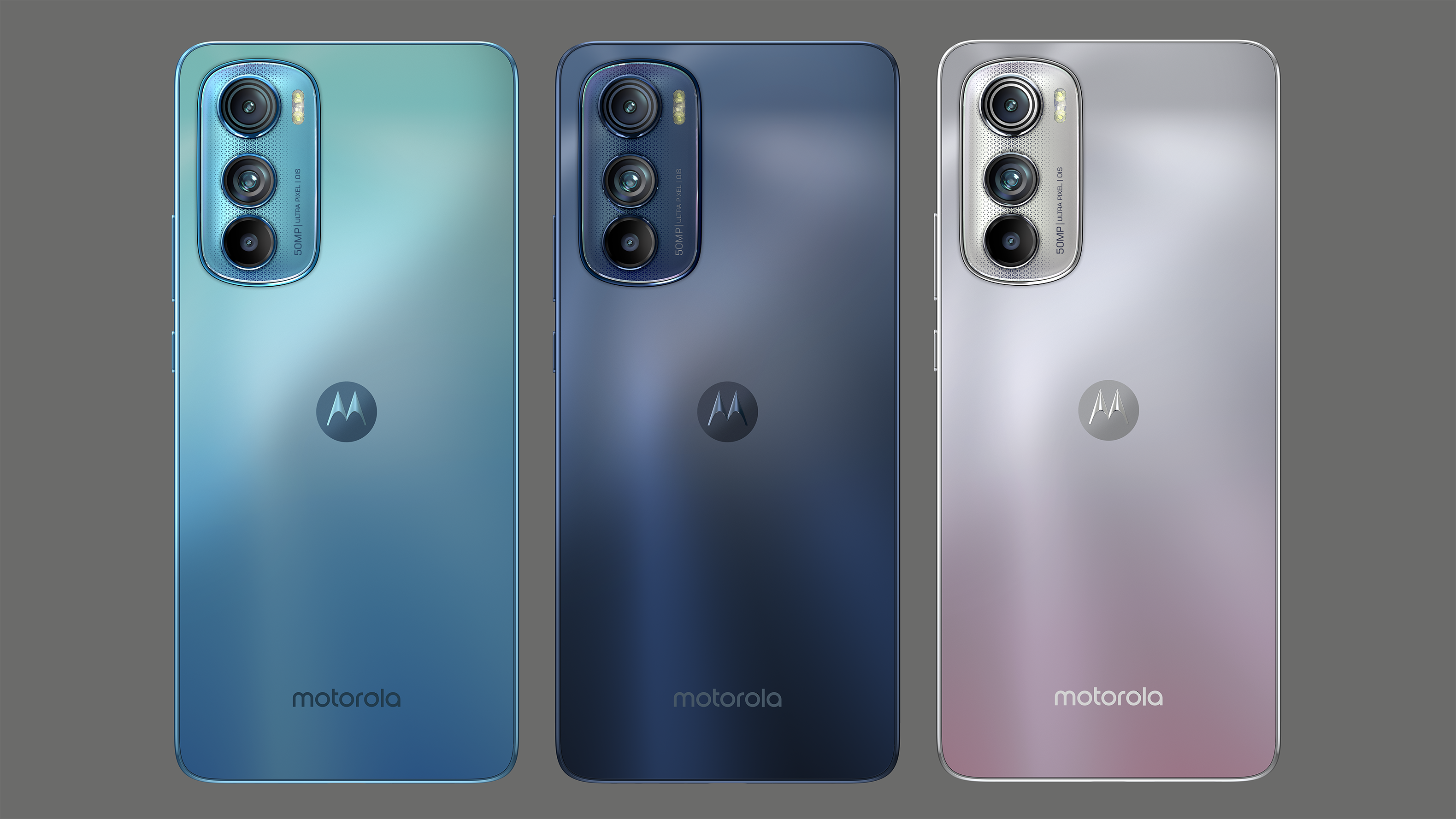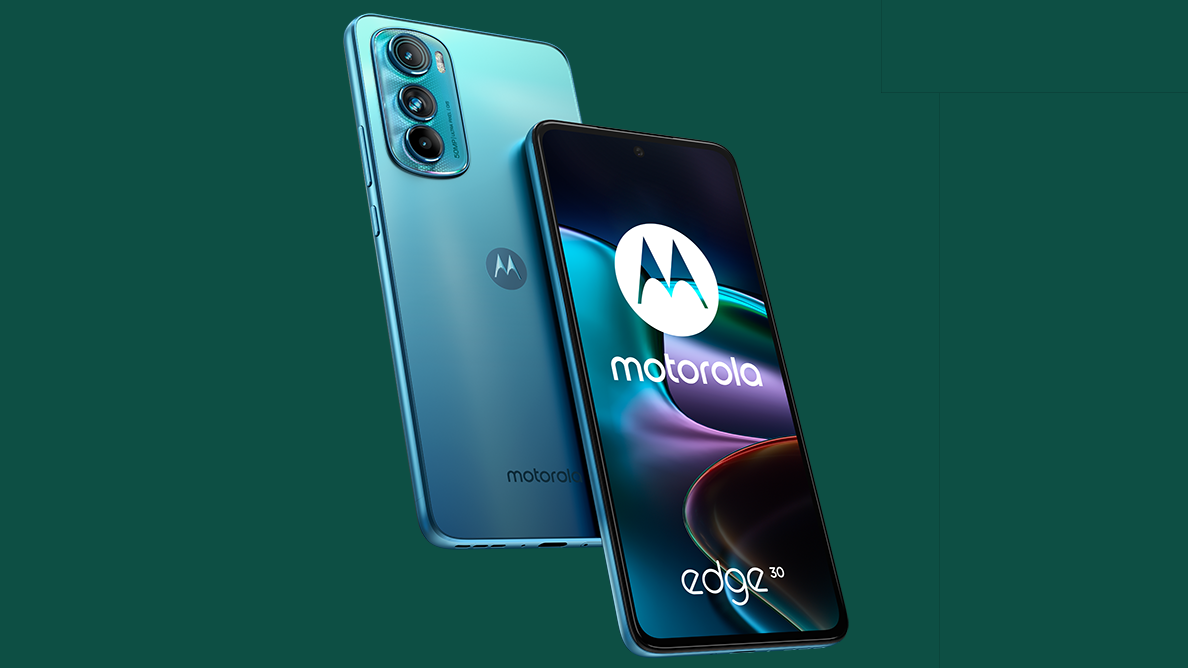Motorola Edge 30 - everything you need to know
The Motorola Edge 30 is a mid-range phone with a 144Hz refresh rate

Following on from the Motorola Edge 30 Pro the company has unveiled the standard Motorola Edge 30 – a phone which logic dictates should have come first but is finally here now.
The new phone is a mid-range device, and a particular focus seems to have been placed on the design, the cameras, and the 144Hz screen.
Below we’ve detailed everything you need to know about the Motorola Edge 30, including those specs in full and information on the UK release date and price.
Cut to the chase
- What is it? Motorola's latest mid-range phone
- When was it out? May 19 (UK)
- How much does it cost? £379.99 (roughly $480 / AU$670)
UK release date and price
The Motorola Edge 30 went on sale in the UK in mid May 2022, at a price of £379.99 (roughly $480 / AU$670). It has since been succeeded by the Edge 40, which you can read about in our Motorola Edge 40 review.

Design
The Motorola Edge 30 has a jewel-like pattern on the back that shifts and changes as you tilt the phone. It comes in at 155g and 159.38 x 74.24 x 6.79mm, so it’s fairly lightweight and very slim. In fact, the company claims it’s the thinnest 5G smartphone in its class.
There’s no word on what it’s made from, but we would guess it has a glass back and a plastic frame, like the Motorola Edge 30 Pro – though it’s possible that the whole thing is plastic.
The back (which comes in a choice of Meteor Grey, Aurora Green or Supermoon Silver shades) appears flatter than many smartphones, and it has a large triple-lens camera block in the top left corner. From the front, there’s a flat screen with a punch-hole camera in the top center.
Get daily insight, inspiration and deals in your inbox
Sign up for breaking news, reviews, opinion, top tech deals, and more.
The Motorola Edge 30 also sports an IP52 rating, meaning it’s got reasonable protection from dust but only a small amount of water resistance.

Display
There’s a 6.5-inch AMOLED screen with a 144Hz refresh rate on the Motorola Edge 30. That’s an exceedingly high refresh rate, even having the likes of the Samsung Galaxy S22 Ultra and the iPhone 13 Pro Max beat, but this is something Motorola has gone for before, such as on the Motorola Edge 20.
The screen also supports HDR10+, and it meets DCI-P3 cinematic standards for color range, brightness, contrast, and color accuracy.
The company hasn’t listed the resolution, but we’d imagine it’s similar to the 1080 x 2400 Motorola Edge 30 Pro, so reasonably sharp but not a match for most top-end phones, which tend to have QHD+ displays.
Camera and battery
The Motorola Edge 30 has a triple-lens rear camera, consisting of a 50MP f/1.8 main sensor, a 50MP f/2.2 ultrawide one (with a 114-degree field of view), and a 2MP f/2.4 depth sensor.
The company boasts that the main lens has ‘Instant All-Pixel Focus,’ which uses 100% of pixels so that you can get faster and more accurate performance from the camera in any light.
The main camera also has optical image stabilization, and can use pixel binning to combine four pixels into one. This lets more light in and allows for improved night-time shots.

The phone can also shoot UHD video at 30fps, or FHD content at up to 60fps, and there’s a slow-motion mode which can record at up to 960fps (in HD quality).
Finally, there’s a 32MP f/2.4 camera on the front.
As for the battery, that’s got a middling capacity at 4,020mAh, and supports 30W charging.
Specs and features
There’s a mid-range Snapdragon 778G Plus 5G chipset powering the Motorola Edge 30, and as that name suggests, the phone also supports 5G. The phone also comes with 8GB of RAM and a choice of 128GB or 256GB of storage.
It runs Android 12, has two stereo speakers with Dolby Atmos, and supports Ready For – a feature that lets you connect the phone wirelessly to a TV or monitor, to view content on a larger screen.
- Check out the best Motorola phones
James is a freelance phones, tablets and wearables writer and sub-editor at TechRadar. He has a love for everything ‘smart’, from watches to lights, and can often be found arguing with AI assistants or drowning in the latest apps. James also contributes to 3G.co.uk, 4G.co.uk and 5G.co.uk and has written for T3, Digital Camera World, Clarity Media and others, with work on the web, in print and on TV.